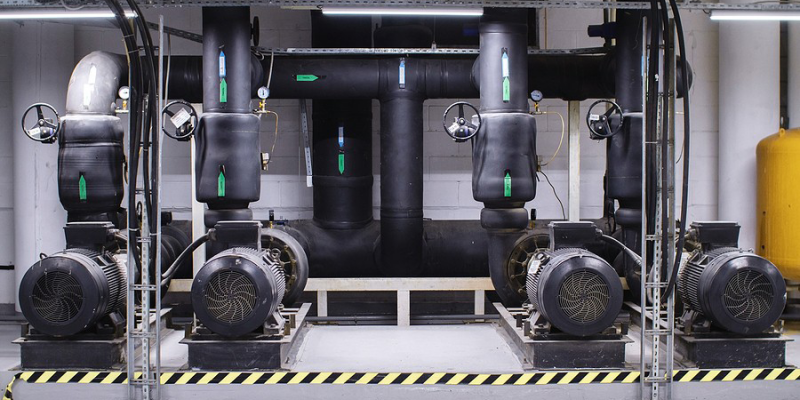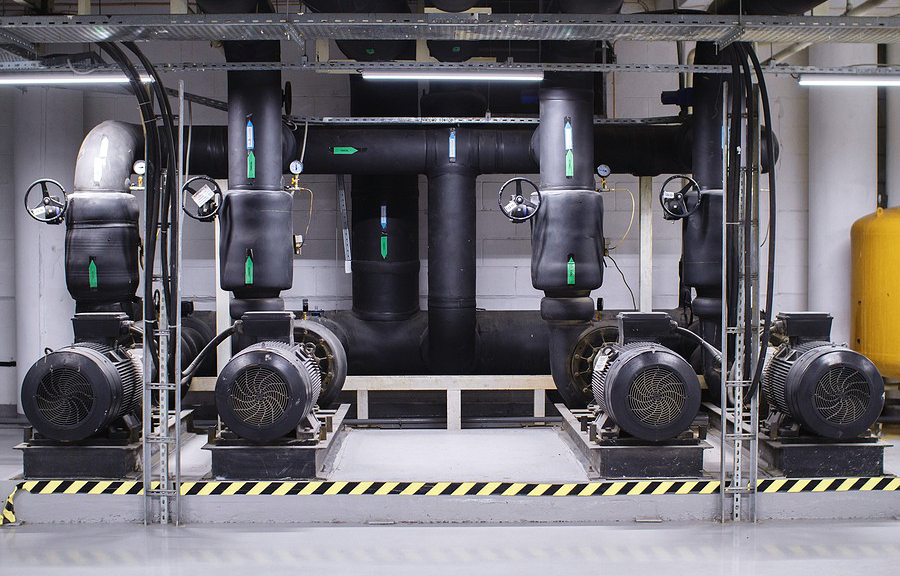
Filtration of Closed Loops
A central plant system often has two types of water piping loops: closed and open.
The open loop runs between the chiller and the cooling tower. When flowing to the tower, the water is exposed to the atmosphere. This results in evaporation and cooling and makeup water must be introduced to replace the evaporated water and blowdown. The tower will scrub the air; filters or separators are a good part of tower maintenance.
The closed loop system runs between the chiller and air handling units, or some cooling load. All this circulated water returns to the chiller and, in theory, it doesn’t require makeup water. But, in many cases there are losses to these closed loops which demand significant make up. In some parts of the country, closed loops are drained in the winter months to prevent freezing, so there is regular turnover of this closed loop.
Closed loops are seemingly easy to treat.
Simply maintain pH levels and inhibitor; they are closed, and protection is sound and stable. Loops are felt to be stable and oftentimes, they are ignored. What people think are closed loops are not really closed loops—they have considerable makeup water and ultimately there are big problems, those problems are a different issue.
When loops are dirty or have corrosion issues, debris and or corrosion byproducts are removed from the loop by filtration. Filtration can play a very important role in maintaining closed loops as well as reviving fouled ones.
Types of Filters
There are three primary types of filters: bag, cartridge, and sand.
Bag filters operate by trapping waste solids inside the bag. They’re a relatively low-cost form of industrial filtration. A potential downside: They have a smaller surface area than most cartridge filters.. Bag filters are an excellent choice for applications when the user wants to minimize their volume of waste.
Cartridge filters capture solid contaminants on the outer surfaces of the filter media. They are built to offer a much larger surface area than a bag filter. Cartridge filters run the gamut from inexpensive bonded units to more expensive models made from a variety of high-capacity pleated types of media. They’re appropriate for a wide range of applications, and filter sizes can go all the way down to sub-micron size where needed.
Both cartridge and bag filters can be made of a variety of different materials, including cotton, activated carbon, needle felt, and polypropylene and nylon monofilament mesh. Filter housing can be made of a number of materials. Stainless steel is the normally the best choice for a filter housing. Insulating the housing will keep it from sweating in a chilled water application and remember not to install a plastic filter housing into a hot water system which exceeds the rating of that filter.
Sand filters can do an excellent job under appropriate circumstances. They need appropriate backwashing. These filters can contain a variety of different types of sand, some which filter more or less effectively depending on the debris they’re intended to filter. Sand filters must be appropriately sized and they must be monitored and maintained.
In some applications, filtration can be aided by products such as ChemFloc, a closed loop binding agent used to help remove finer particles not always easily removed with normal filtration.
Evaluating Your Closed Loop System
When determining appropriate treatment for a closed loop system, start with a visual inspection. Is it cloudy or dirty? Check its chemical profile: Does it have high iron or copper content? Is the initial sample water odoriferous? All of these warrant attention.
There are many filtering options available. Chemtex can help you choose the proper filter for your application. We’ll evaluate the current conditions in your closed loop and help you make the right choice for your specific circumstances.




/NQA-ISO-9001-Logo-ANAB.jpg)